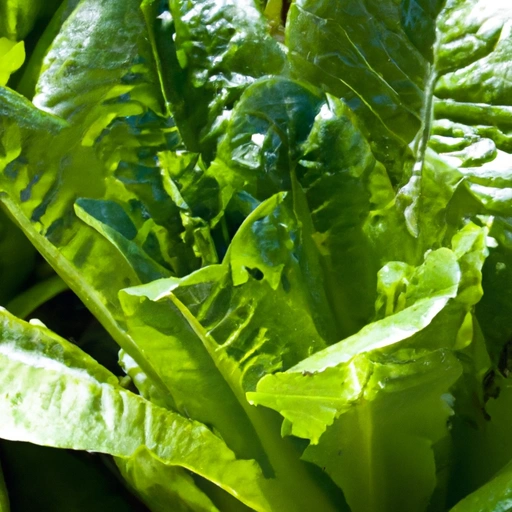Romaine
Description

Romaine lettuce, also known as Cos lettuce, is a popular leafy green vegetable known for its tall, sturdy, dark green leaves and a crisp, slightly bitter taste. It is widely used in salads, particularly the classic Caesar salad, and is valued for its nutritional content and versatility in the kitchen. With leaves that can grow up to 10 inches in length, romaine lettuce provides a robust texture and flavor to dishes, making it a beloved ingredient in various cuisines around the world.
Common uses
Romaine lettuce is primarily used as a base for salads, but it can also be grilled, sautéed, or used as a wrap for various fillings. Its sturdy leaves make it an excellent choice for adding crunch to sandwiches and burgers.
Nutritional value
Calories
One cup of shredded romaine lettuce (approximately 47 grams or 1.7 ounces) contains about 8 calories (33 kilojoules).
Protein
Romaine lettuce provides approximately 0.58 grams of protein per cup.
Fat
This leafy green is very low in fat, with just about 0.14 grams per cup.
Carbohydrates
Romaine lettuce contains about 1.55 grams of carbohydrates per cup, which includes dietary fiber.
Vitamins
It is an excellent source of vitamins, particularly vitamin A and K. One cup of romaine contains close to 4090 IU (international units) or about 204% of the recommended daily value (DV) of vitamin A and about 48 micrograms (µg) of vitamin K, equating to 60% of the DV.
Minerals
Romaine lettuce provides essential minerals, including calcium (16 milligrams per cup, which is about 2% of DV) and potassium (116 milligrams per cup, around 3% of DV).
Health benefits
Consuming romaine lettuce can support weight management due to its low-calorie count and high water content. Its fiber content aids digestion and promotes a healthy gut, while the vitamins and minerals it contains support overall health, including vision, bone strength, and blood clotting.
Potential risks
Romaine lettuce has been associated with foodborne illnesses, so it's important to wash it thoroughly before consumption. Furthermore, individuals taking blood thinners should monitor their vitamin K intake, as it plays a role in blood clotting.
Common recipes
Romaine is a staple in Caesar salad, garden salads, and Greek salads. It can also be found in wraps, sandwiches, and as garnishes for various dishes.
Cooking methods
While often consumed raw, romaine lettuce can be grilled for a smoky flavor or quickly wilted in a pan for a warm salad component.
Pairing with other ingredients
Romaine pairs well with a wide range of ingredients, from creamy dressings and cheeses to crisp vegetables, fruits, nuts, and lean proteins such as grilled chicken or tofu.
Summary
Romaine lettuce is a nutritious, versatile ingredient that can be included in a variety of dishes. With a rich history and numerous health benefits, it remains a favorite for home cooks and professional chefs alike. Whether used in fresh salads, as a wrap, or grilled for a different take, romaine brings a refreshing crunch and a host of nutrients to any meal.